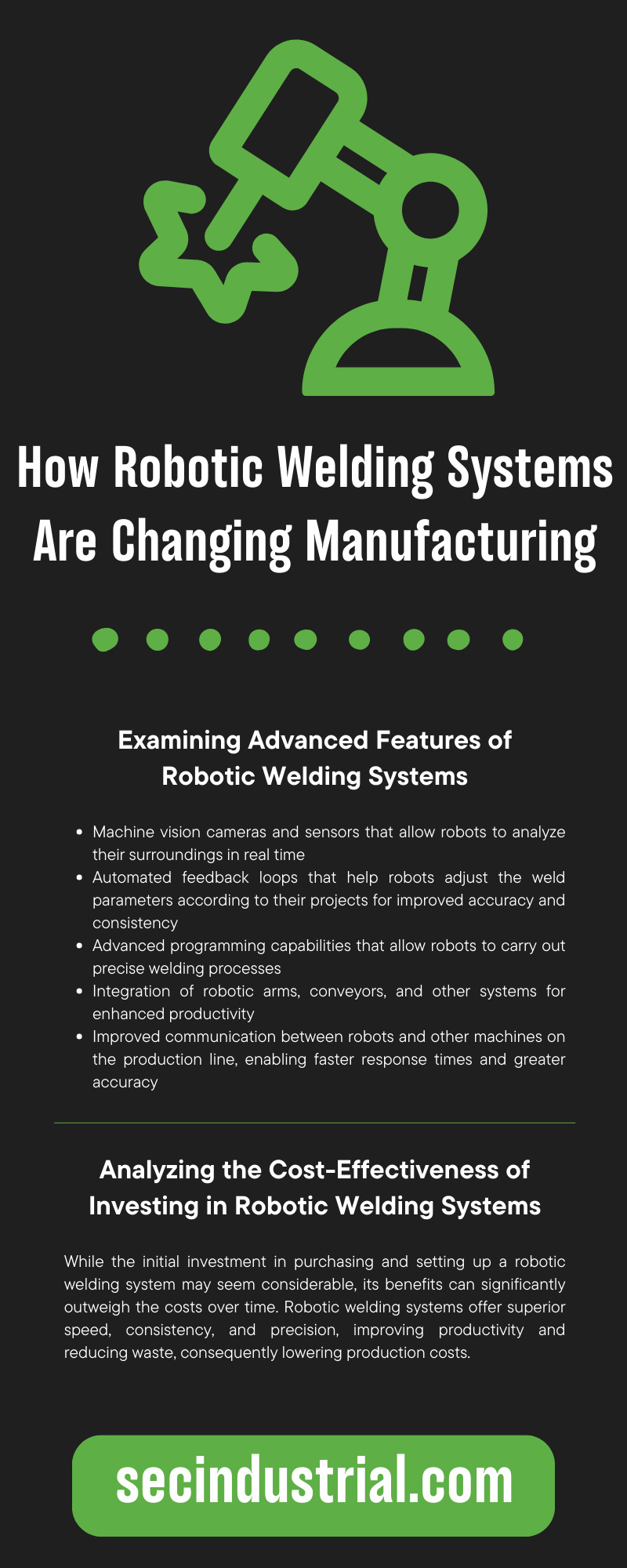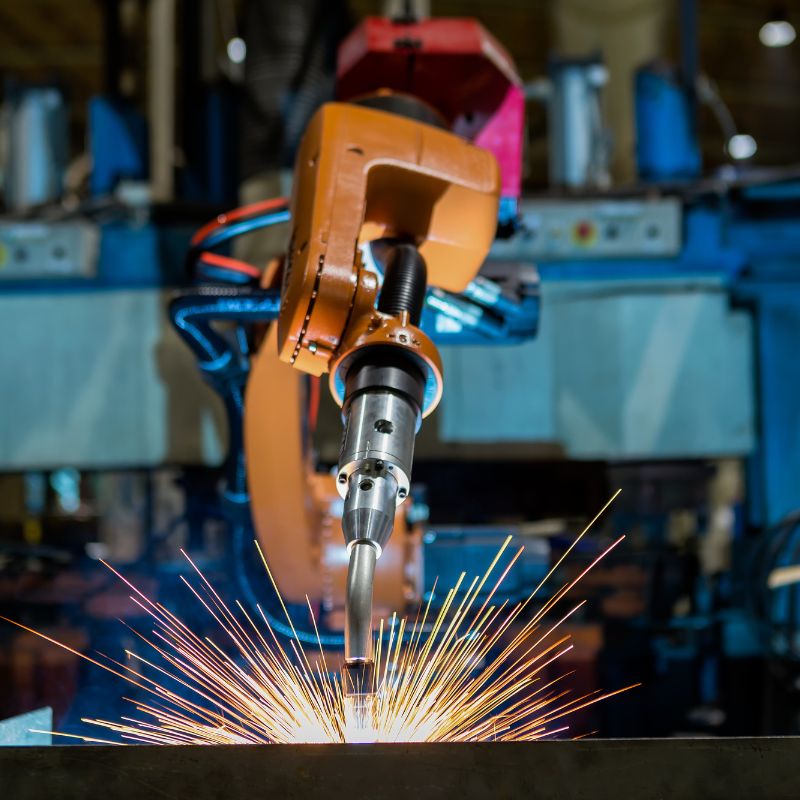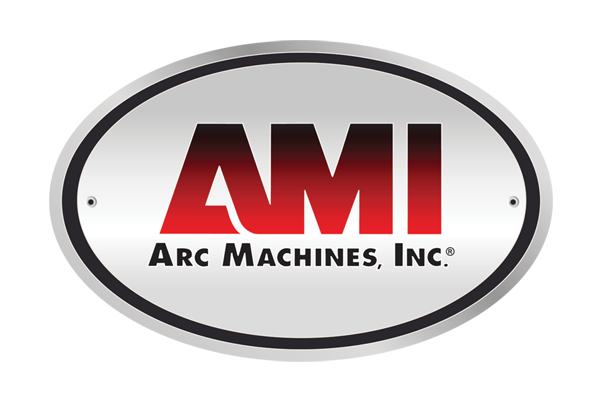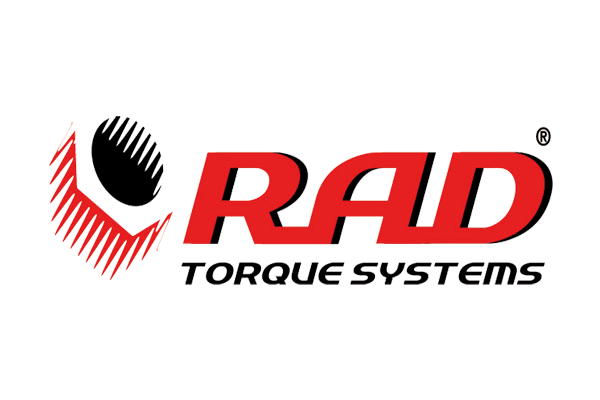How Robotic Welding Systems Are Changing Manufacturing
Robotic welding systems are beginning to revolutionize how the manufacturing industry creates products and materials. With high accuracy, speed, integration of machine vision cameras, and precision welds for industrial applications, these robots have become invaluable for businesses worldwide that require reliable product construction and results.
As technology advances faster than ever, robotic welding systems remain on the cutting edge, offering users real-time analytics and enhanced communications capabilities varying from automated decisions to actual programming instructions. Let’s look closer at the ways robotic welding systems are changing manufacturing on a global scale.
Introducing the Basics of Robotic Welding Systems
Robotic welding systems consist of a mechanized programmable tool (a robot) and a welding device that it operates. The robot is typically a six-axis industrial robot that can move linearly and rotationally. Equipped with advanced sensors and precision control systems, these robots can perform highly accurate welds, even in challenging environments or intricate geometries.
One of the primary components of a robotic welding system is the controller, which is essentially the robot’s “brain.” Here, the robot processes programmed instructions, enabling it to carry out its tasks. The controller is typically accompanied by a teach pendant—a handheld device that allows operators to manually program the robot and control its movements.
A welding gun is another crucial component of a robotic welding system. This gun is the tool that the robot uses to perform actual welding tasks. Two main types of welding guns exist—arc welding and spot welding—which vary based on the specific application’s requirements.
Understanding the Benefits of Automation in Manufacturing
The primary benefit of using a robotic welding system is its ability to automate various manufacturing processes, thus vastly reducing the need for manual labor. Robots can quickly and accurately perform multiple tasks that would take humans much longer and require significantly more effort. What’s more, robots can replicate processes time and time again with consistent results, ensuring greater accuracy and reliability.
Robotic welding systems can also perform complex tasks in extreme conditions that may be hazardous to human workers. This helps reduce the risk of workplace injuries and improves the quality and efficiency of production.
In addition to improving safety, robotic welding systems can enhance cost-effectiveness by replacing labor costs with capital investments. By investing in a robotic welding system, businesses can free up their resources and focus on other aspects of the manufacturing process.
Examining Advanced Features of Robotic Welding Systems
Robotic welding systems have various advanced features that enable them to carry out even the most complex tasks effectively. Here are some of these features:
- Machine vision cameras and sensors that allow robots to analyze their surroundings in real time
- Automated feedback loops that help robots adjust the weld parameters according to their projects for improved accuracy and consistency
- Advanced programming capabilities that allow robots to carry out precise welding processes
- Integration of robotic arms, conveyors, and other systems for enhanced productivity
- Improved communication between robots and other machines on the production line, enabling faster response times and greater accuracy
Exploring New Technologies in Robotics for Manufacturing Applications
As the robotics industry continues to evolve, so does the technology of robotic welding systems. This evolution has allowed manufacturers to explore new possibilities for creating high-quality products faster than ever before. Some of these newer technologies include the following:
- Augmented reality (AR): AR systems provide robots with 3D visuals that help them identify and assemble products faster.
- Artificial intelligence (AI): AI enables robots to autonomously adjust their performance based on real-time feedback from their environment.
- Autonomous mobile robots (AMRs): AMRs are self-navigating robots that can move around a production facility and collect data to determine the best course of action for any given task.
Analyzing the Cost-Effectiveness of Investing in Robotic Welding Systems
Investing in robotic welding systems can be highly cost-effective for manufacturers in the long run. While the initial investment in purchasing and setting up a robotic welding system may seem considerable, its benefits can significantly outweigh the costs over time. Robotic welding systems offer superior speed, consistency, and precision, improving productivity and reducing waste, consequently lowering production costs.
Equally important is that these systems can operate continuously without the need for breaks, unlike human operators, increasing the total output and decreasing manufacturing time. This results in a higher rate of return on the initial investment.
Additionally, robotic welding systems minimize the costs associated with workplace injuries by reducing the need for human involvement in risky tasks. They also lower costs related to training and ongoing labor force education, as manufacturers can simply reprogram robots for different welding tasks.
Looking Ahead to Future Developments in Robotics and Automation
The future of robotics and automation looks promising. As robotic welding systems continue to evolve, they have the potential to revolutionize manufacturing processes across a wide range of industries. With enhanced precision, speed, and accuracy, robots can produce higher-quality products than ever before.
New technologies such as AI and AR are also helping improve the efficiency and effectiveness of these systems. These new technologies enable manufacturers to create products faster and at a lower cost while ensuring superior quality. As these technologies become more advanced, robotic welding systems will improve production processes significantly.
All in all, robotic welding systems are revolutionizing manufacturing and paving the way for a more efficient, cost-effective future. This efficiency makes them an increasingly attractive option for companies looking to reduce costs and increase productivity. Investing in a robotic welding system now could be an excellent way to prepare your business for the future of manufacturing.
Now that you know how robotic welding systems are changing manufacturing, you might want in on the change. If you need some help with automated pipe spool welding or are looking for other automated welding solutions, SEC Industrial can help. We offer a range of automated welding services to help streamline your production processes and enhance the quality of your products. Our experienced engineers can help you select the right robotic welding system for your needs and ensure it is implemented properly. Contact our team today to learn more about how we could help you take advantage of robotic welding systems.










